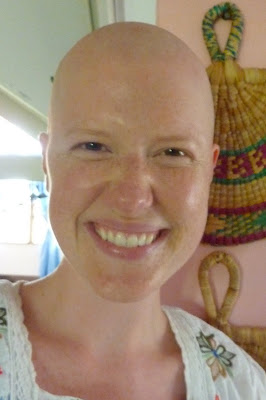 |
| The group of artisans and their families learn about making organic fertilizer. |
One of the main concerns of this farm is the soil. I learned
back in Wisconsin that plants need potassium, phosphorus and nitrogen (K—P—N)
to survive, but also they need many other different minerals and elements
(e.g., calcium, zinc, magnesium, boron) and bacteria—microorganisms that
contribute to the decomposition of organic matter that enriches the soil. In
conventional agriculture, farmers have a plant-focused approach to growth: give
the plants what is needed to grow, using chemical fertilizers that feed the
plants directly but do nothing to build the soil. When the plants are ready to
be harvested, the soil is as or more impoverished. On the opposite end,
biological organic farming concentrates on a soil-positive approach: feed the
soil and the plants will be strong and healthy. When organic plants are
harvested, they leave behind soil that will continue to contribute positively
to the environment and subsequent harvests.
 |
| These are the tanks where the BIOL fertilizer is ripened, which takes about three months.
|
 |
| The bacteria that helps make BIOL are anaerobic (do not need oxygen), so to prevent oxygen
from entering the tanks, the tubes are placed in bottles of water. |
 |
| I'm in sunnyside up yellow for spraying BIOL.
|
Finca La Amistad produces its own fertilizers: BIOL (a liquid
fertilizer with microorganisms) and BOCASHI (a solid mixture of dried manure,
yeast, molasses, charcoal, ashes, rice hulls, ground wheat bran and powdered
rock). BIOL is sprayed on the plants and trees and reduces decomposition time
by 1/3, while sustaining vigorous growth of the plants by providing them with
necessary nutrients. BOCASHI is used to mix with the soil, as compost might be
used to build the soil; however, it is more robust in that it combines minerals
with the fertilizer. We spread it on the field where we planted potatoes,
beans, corn and squash, as well as using it when we plant trees. They have also
used it to fertilize the granadilla vines.
 |
BOCASHI takes about 12 days to decompose and become usable. This is day 9.
|
Learning about the process of making organic fertilizers is
fascinating, in that I am also learning about the components of the soil, the
foundation of good agriculture. Unfortunately, conventional agriculture has
changed the way people look at food production. Instead of nurturing the soil
and preserving long-term, wholesome growth of plants, the chemicals used to
force plants to grow are poisoning the very environment needed to bear our food
for future generations. The more I know about the soil, the more I am convinced
of the importance to protect and nourish this fundamental building block. God
gave us life from the dirt, and to dirt our bodies return. It is a main
component in this God-given cycle of life.








Comments